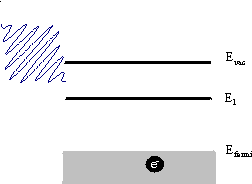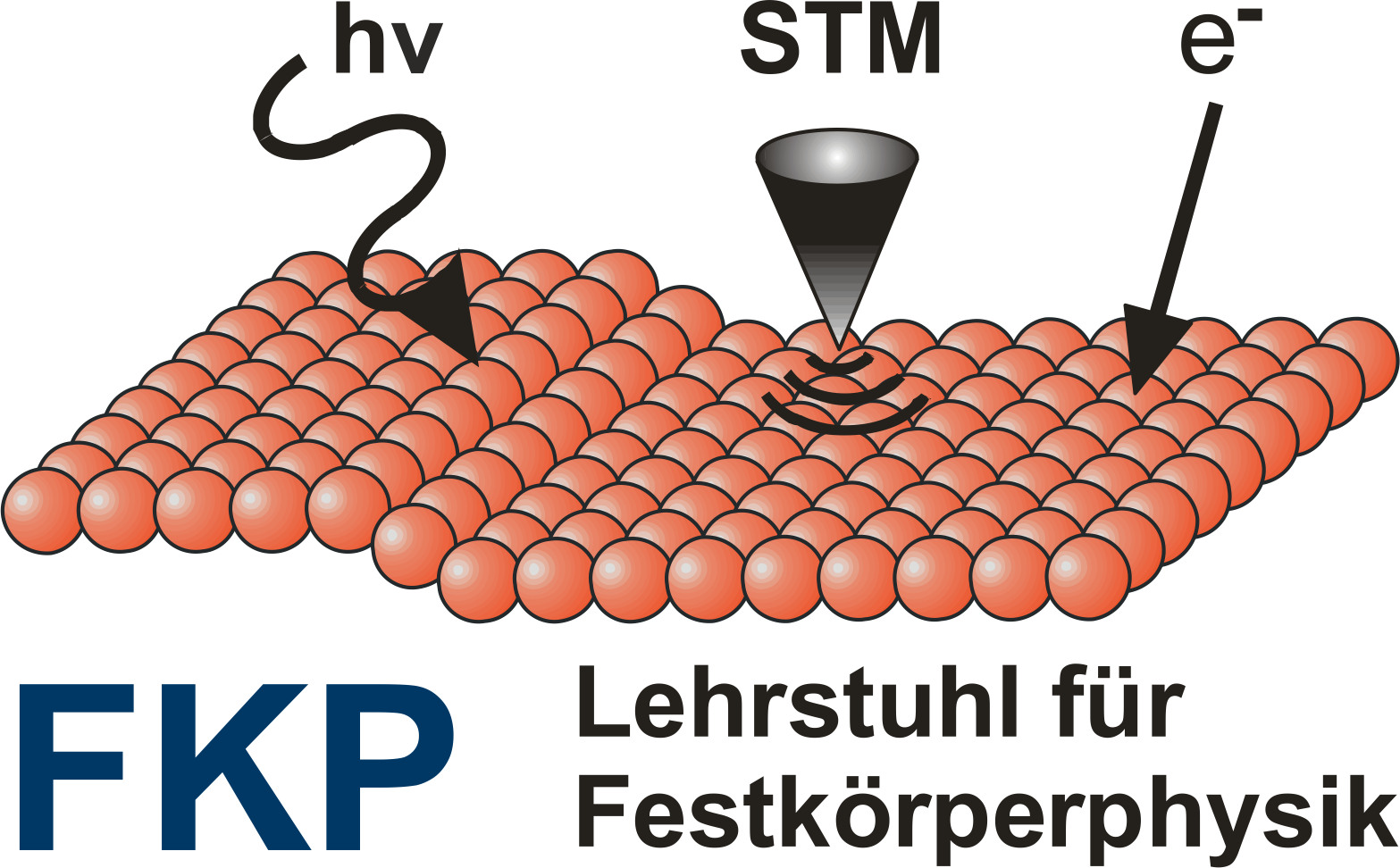In brief
A method to examine unoccupied surface states is Two-Photon Photoemission (2PPE) Spectroscopy. It is based on the photoeffect with the difference that two photons are used to remove the electron from the solid. The first photon excites the electron to the unoccupied state (see figure). If the lifetime of this state is not too short, another photon excites it to the final state above the vacuum level. Then the electron is detected by an energy analyzer.
The photons are generated by a laser which gives short laser pulses. Part of the laser beam is doubled or tripled in frequency and realigned with the original 1hn beam. One of the pulses pumps the intermediate state whereas the other beam probes it.

There are actually two different modes of recording data in 2PPE
- Energy-resolved spectroscopy at a fixed delay of the two pulses. By varying the detection angle the dispersion of the states can be obtained.
- Time-resolved spectroscopy at a fixed energy. If the pulse width is smaller than the lifetime of the states, the lifetime can be easily extracted from the data.
